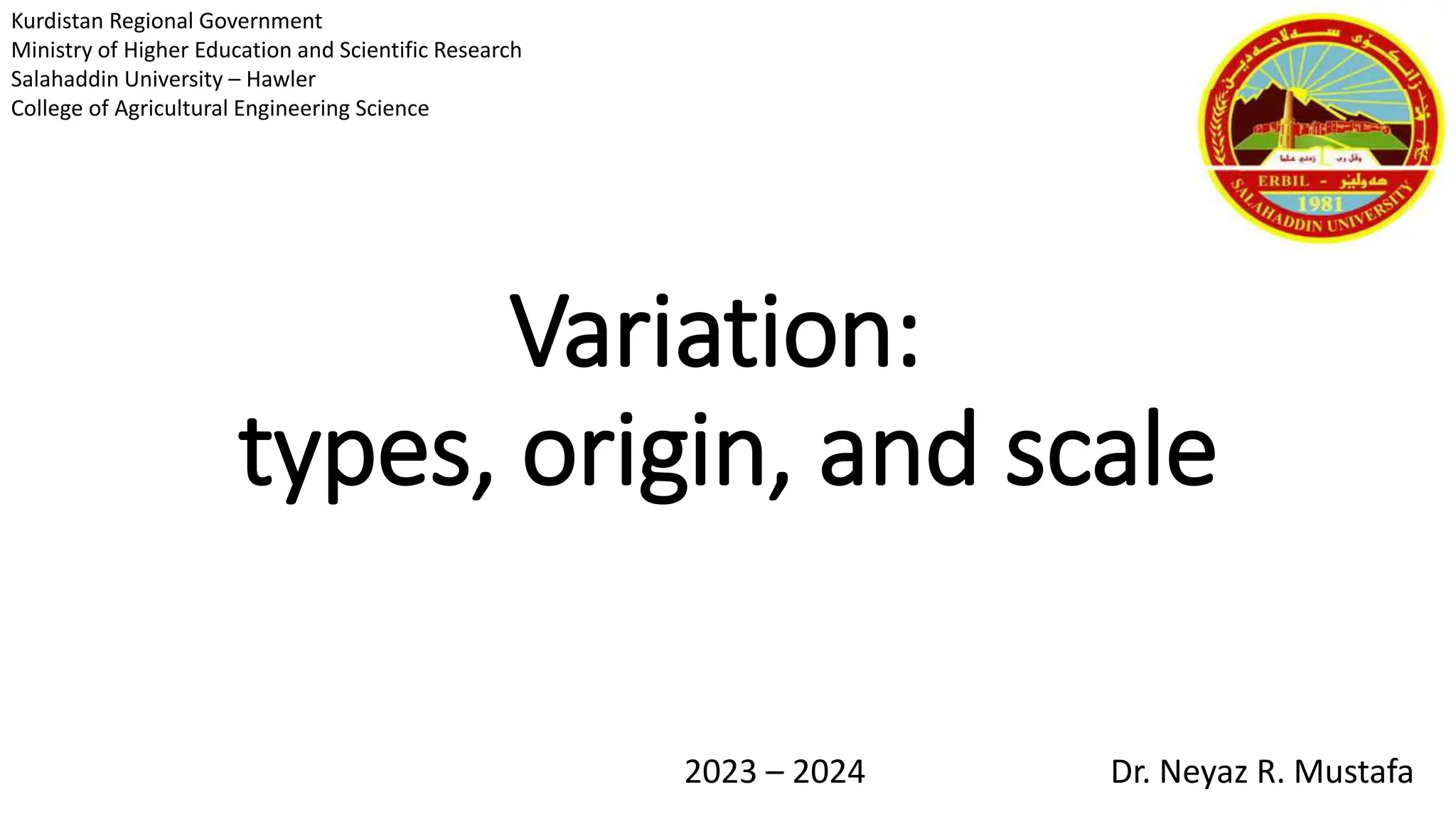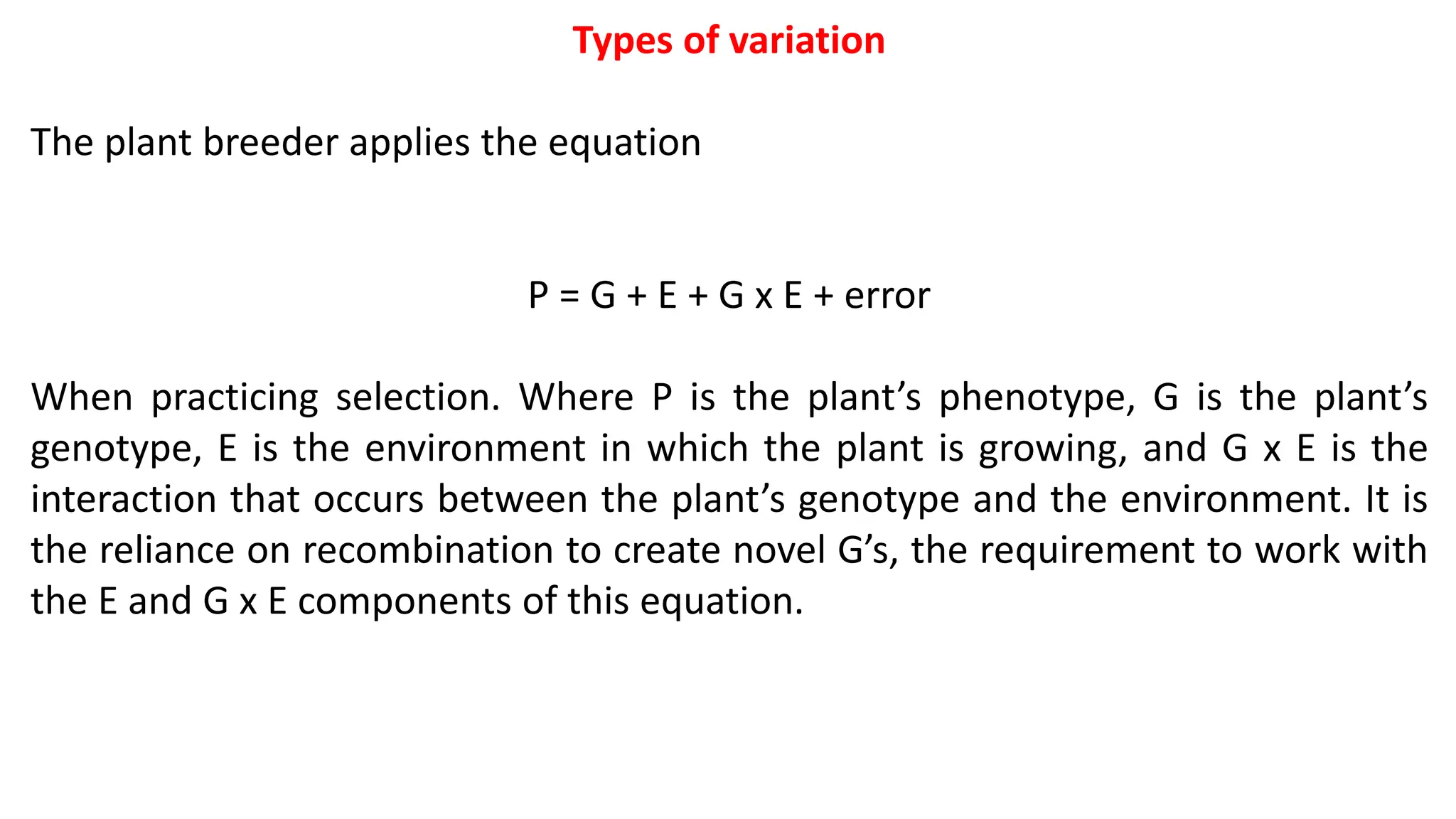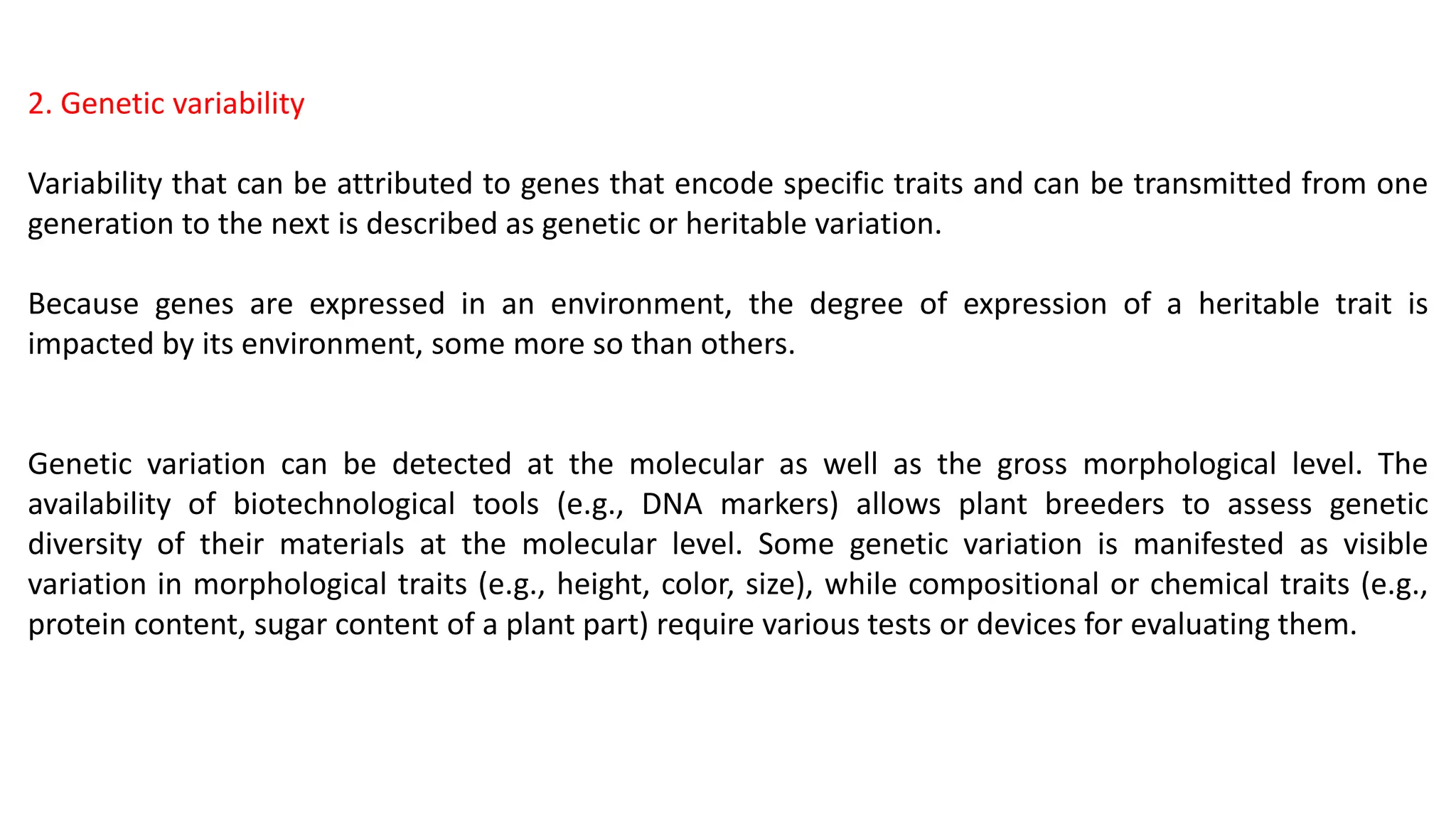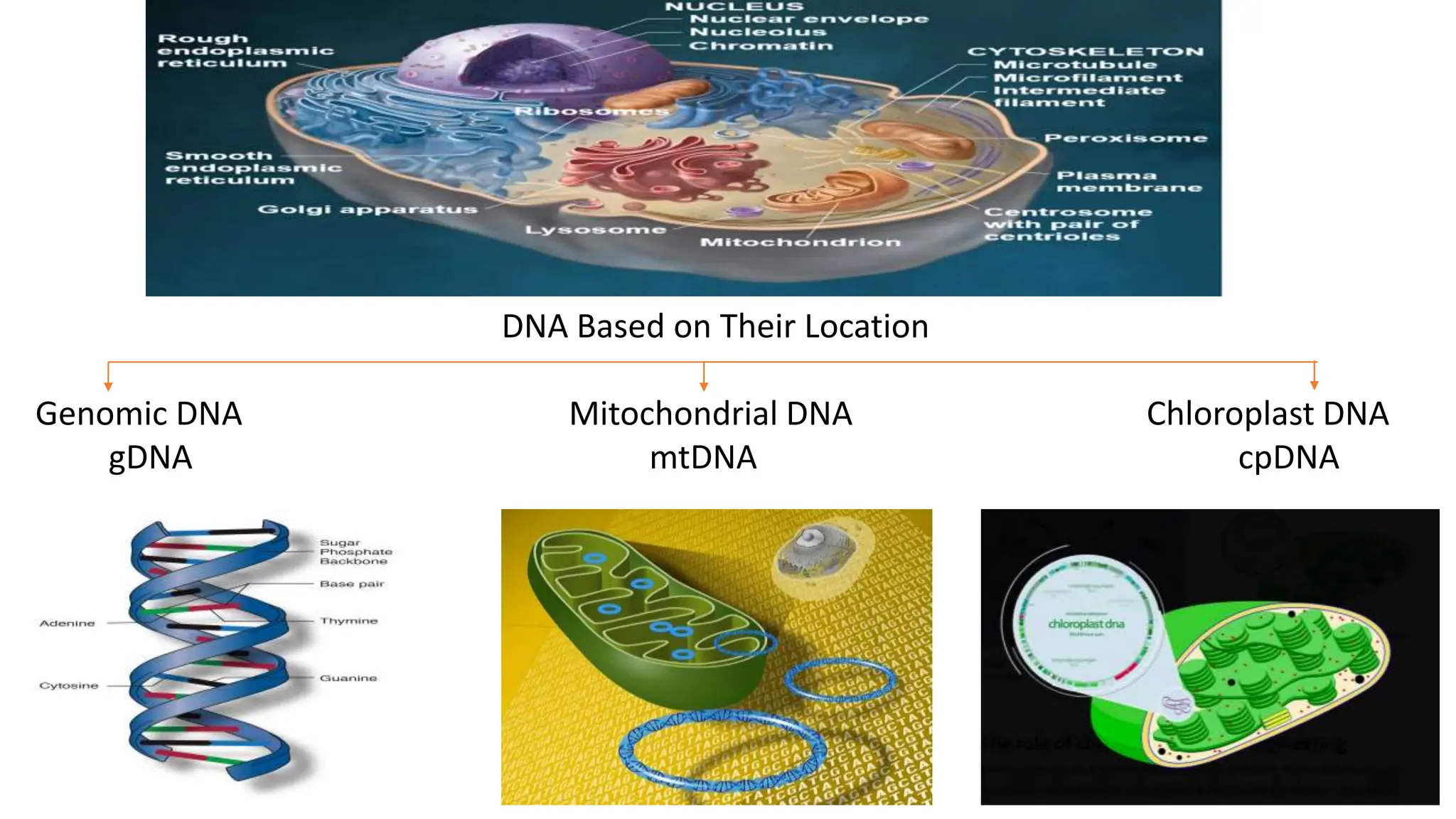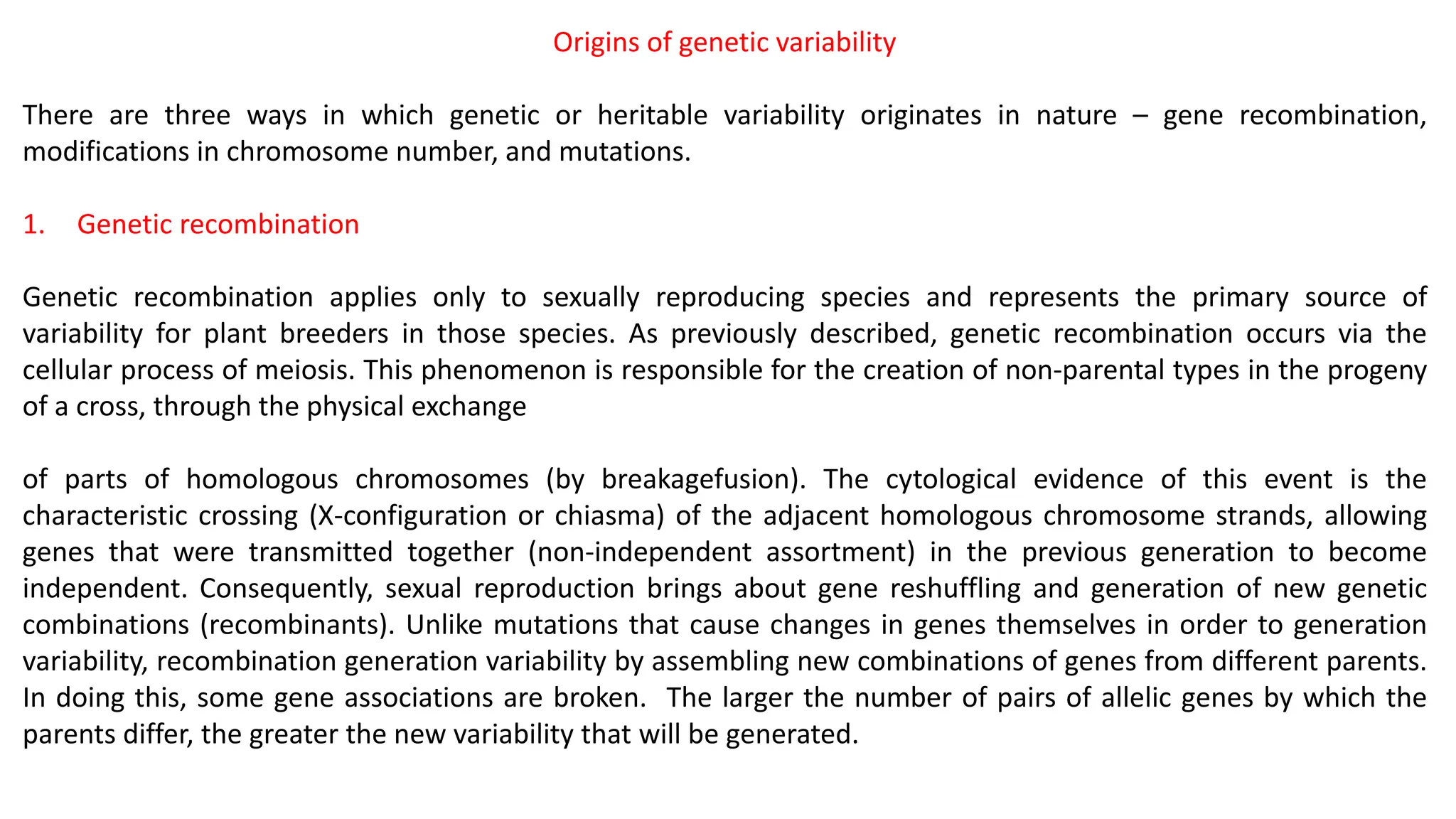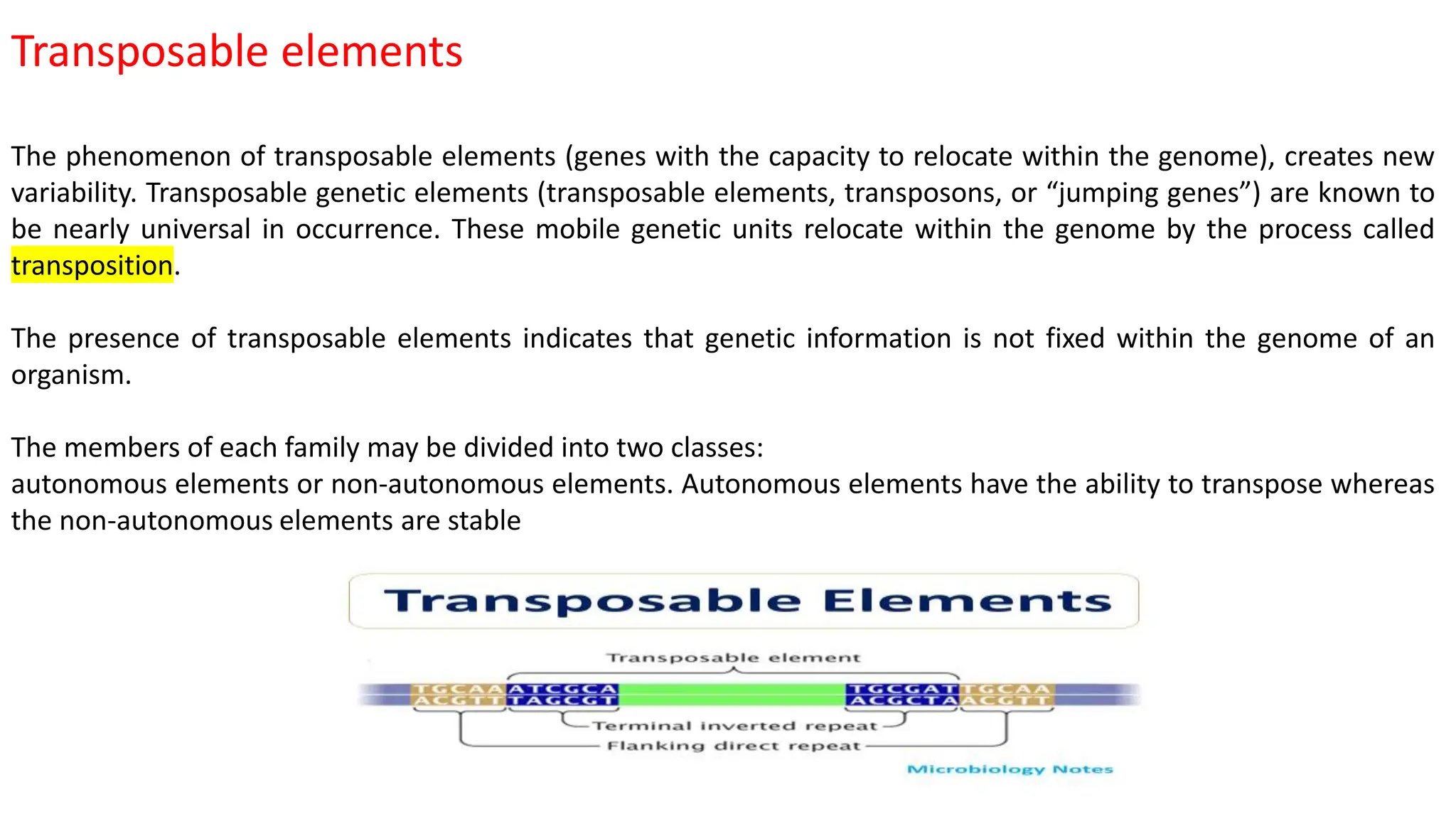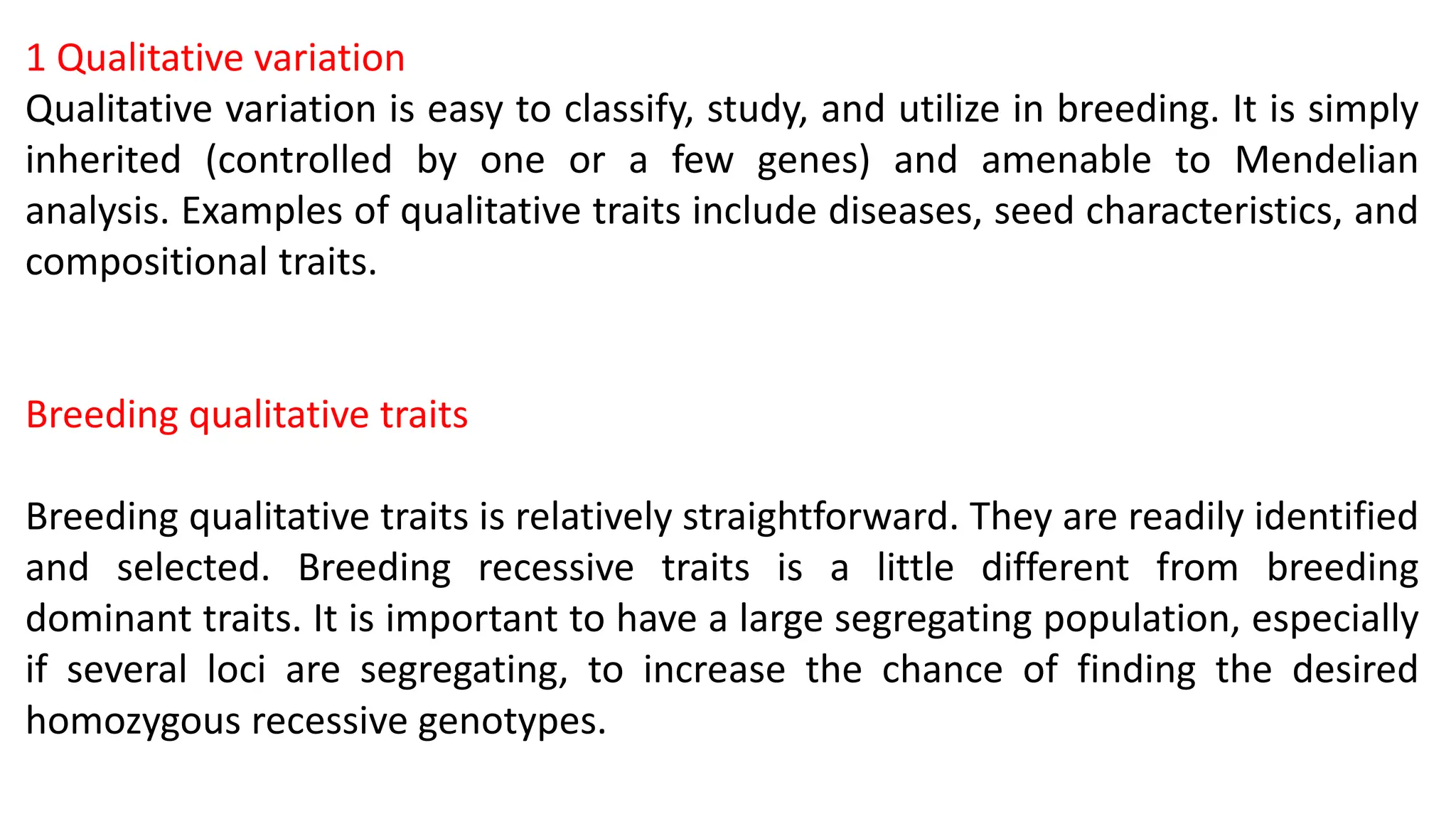This document discusses types of variation in plants, including their origin and scale. It covers genetic and environmental variation, as well as qualitative and quantitative traits. Genetic variation arises from processes like recombination, chromosome modifications, and mutations. Qualitative traits are discrete while quantitative traits exhibit continuous variation controlled by multiple genes. The document provides examples and explanations of these concepts.
